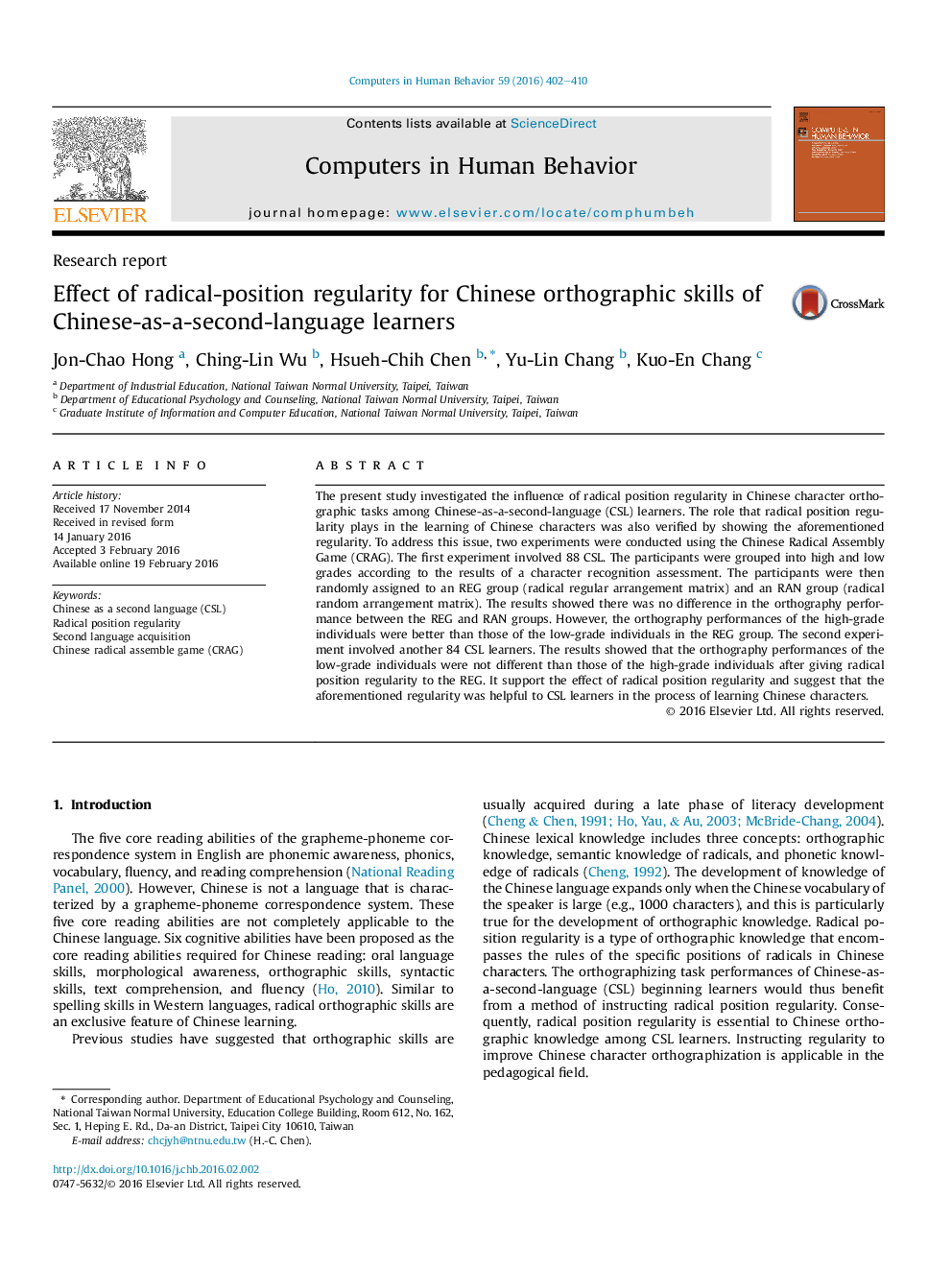| Article ID | Journal | Published Year | Pages | File Type |
|---|---|---|---|---|
| 6837487 | Computers in Human Behavior | 2016 | 9 Pages |
Abstract
The present study investigated the influence of radical position regularity in Chinese character orthographic tasks among Chinese-as-a-second-language (CSL) learners. The role that radical position regularity plays in the learning of Chinese characters was also verified by showing the aforementioned regularity. To address this issue, two experiments were conducted using the Chinese Radical Assembly Game (CRAG). The first experiment involved 88 CSL. The participants were grouped into high and low grades according to the results of a character recognition assessment. The participants were then randomly assigned to an REG group (radical regular arrangement matrix) and an RAN group (radical random arrangement matrix). The results showed there was no difference in the orthography performance between the REG and RAN groups. However, the orthography performances of the high-grade individuals were better than those of the low-grade individuals in the REG group. The second experiment involved another 84 CSL learners. The results showed that the orthography performances of the low-grade individuals were not different than those of the high-grade individuals after giving radical position regularity to the REG. It support the effect of radical position regularity and suggest that the aforementioned regularity was helpful to CSL learners in the process of learning Chinese characters.
Keywords
Related Topics
Physical Sciences and Engineering
Computer Science
Computer Science Applications
Authors
Jon-Chao Hong, Ching-Lin Wu, Hsueh-Chih Chen, Yu-Lin Chang, Kuo-En Chang,
